Know the peach diseases and knowing how to prevent them is of fundamental importance to cultivate peach trees in a biological way. The diseases that affect a peach orchard can be of different nature, the most common are caused by fungal pathogens, but there are others, caused by bacteria and viruses. From this discussion of ours, the pests of the peach treeto which we have already dedicated an in-depth study.
In this article, therefore, we see what are the damages of the main diseases of the peach tree. And for each of them, we will also analyze the agronomic prevention strategies and treatments with products allowed in organic farming.
Diseases of the peach tree of fungal origin
Peach bubble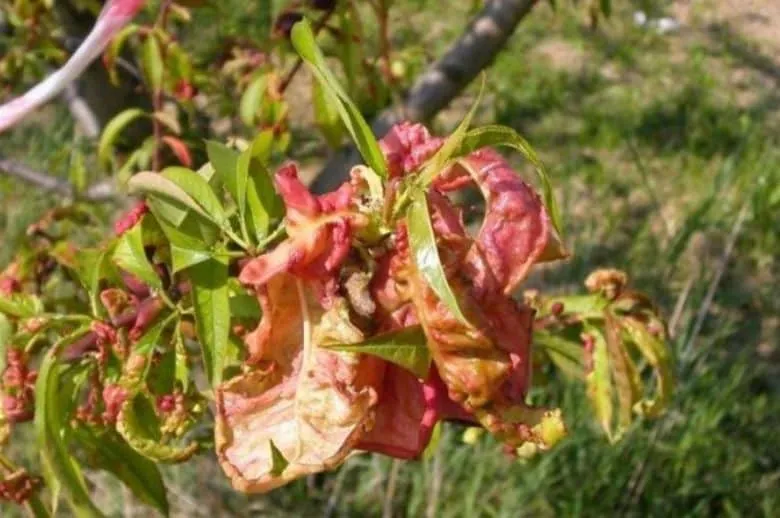
There Taphrina deformans it is the fungal pathogen responsible for the peach bubble, the most widespread disease of this crop. The fungus is kept on the surface of the plant in winter, and infections begin at the spring vegetative restart.
The disease finds its favorable conditions following long rainy periods, associated with the typical mild spring temperatures, around 15 ° C. The parts most affected by the bubble are the young shoots, the leaves, the newly opened flowers and the young fruit in fruit set phase.
The damage is evident on the green organs (buds and leaves) where blistering, curling, chromatic alterations and growth arrest are highlighted.
On flowers and small fruit, the consequence of an attack is an early drop.
Prevention and defense
Prevention against the peach bubble must be carried out well in advance. The permitted bio products are mainly copper salts, which can be combined with and alternated with calcium polysulphide. The first treatment with copper is done after the leaves have fallen, therefore in late autumn, between November and December. Then we wait for the end of winter and we intervene before the buds open, using copper or calcium polysulphide. In the post-flowering period, therefore in March and April, if long rainy periods are foreseen which favor the bubble, a third treatment can be carried out with calcium polysulphide at low concentrations. Alternatively, the propolis or the horsetail macerate.
Corineo of the stone fruit
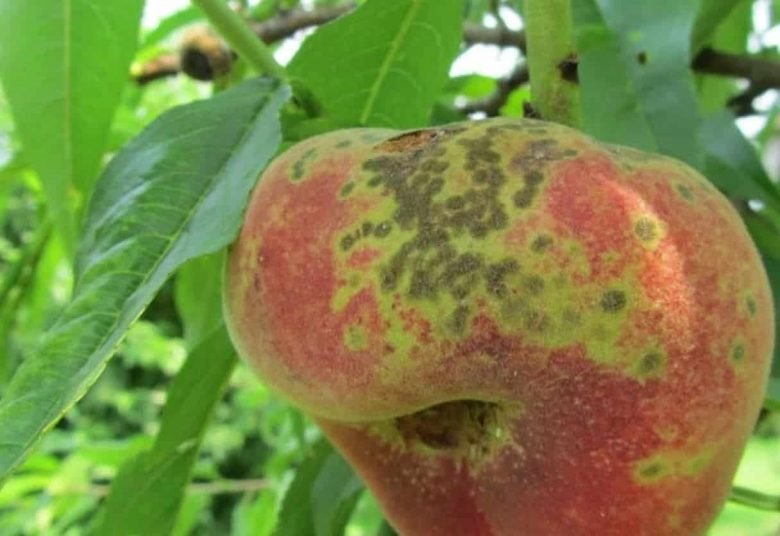
The chorineum (Stigmina carpophila) is a disease that, in addition to the peach tree, also affects the others Stone fruit (eg apricot, almond tree, plum etc).
This disease also develops in the winter months, due to a fungal pathogen. Infections affect the vegetative organs (leaves and branches) and fruits. The environmental conditions predisposing the development of the disease are the periods with high humidity due to heavy rains, with temperatures between 5 and 26 ° C.
The most susceptible plants are those already debilitated. The most serious damage occurs on the branches with the typical leakage of rubbery substance (for this reason the chorineum is commonly called gummy).
Its attack causes the drying of the twigs and a widespread deterioration of the tree, with increasingly widespread cancers. On the affected ripening fruits there may be emission of rubbery exudate.
Prevention and defense
Agronomic prevention from corineo, on peach trees, is carried out during the dry winter pruning phase, through the removal and subsequent burn of the affected parts.
The treatments that are carried out to prevent the blister are also sufficient to control this disease.
Peach powdery mildew
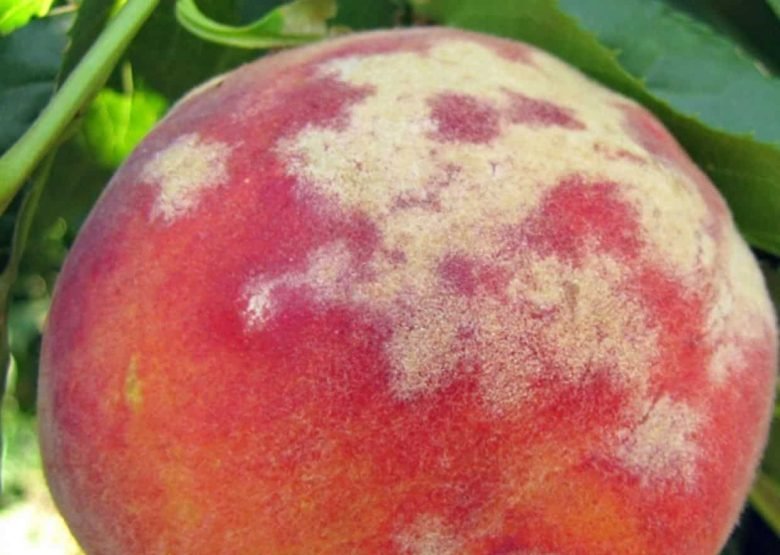
The powdery mildew of the peach tree (Sphaerotheca pannosa od Oidium leucoconium) is a disease that mainly affects peach orchards in the hills or in central-southern Italy. The first attacks of the disease occur in spring, initially on small fruit, after the pinafore. After a phase of stasis in the hottest and driest months, the disease resumes virulence towards the end of the summer.
On the leaves, the oidium of the peach tree is highlighted at first with discolored areas of irregular shape, then there is the appearance of the typical white mold.
Fruits affected early undergo drop and deformations, with a consequent strong deterioration in quality.
Prevention and defense
The prevention of peach powdery mildew is carried out with sulfur-based products, in particular wettable powders (like these). It intervenes in the period that goes from the phenological phase of the end of flowering, during the pimping and up to the enlargement of the fruit.
Monilia of stone fruit
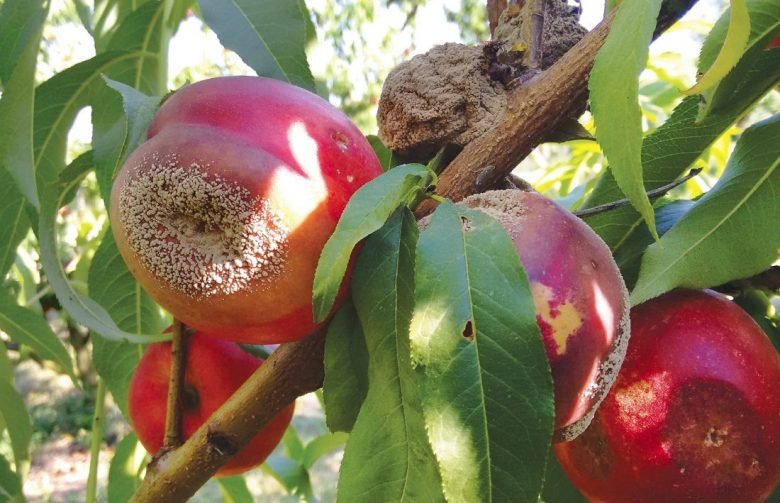
Monilia (Monilinia laxa or Monilia fructigena) is a peach disease caused by fungal pathogens. The preservation of the pathogen in the winter months takes place on the affected fruits and fallen to the ground, on the mummified-looking fruits still present on the plant and on the branch cancers that monilia causes. The most serious attacks of the disease are affecting the flowers and especially the fruits. Affected flowers wilt and turn brown quickly. The fruits, on the other hand, show yellow spots and mold that can also extend into the pulp.
The greatest risks for the inoculation of the pathogen that causes this disease on the peach tree occur in spring and summer, with climatic conditions characterized by high humidity, fog and rain.
Prevention and defense
To prevent the appearance of monilia on the peach tree, correct agronomic practices are very important. In particular, we are talking about the removal and destruction of the affected parts, a balanced nutrition of the tree, green pruning to improve the aeration of the canopy, large planting spans, and the reduction of water stress.
How biological treatmentif there are the predisposing environmental conditions, we can intervene 8-10 days after the fruit harvest with wettable sulfur.
Nerume of stone fruit
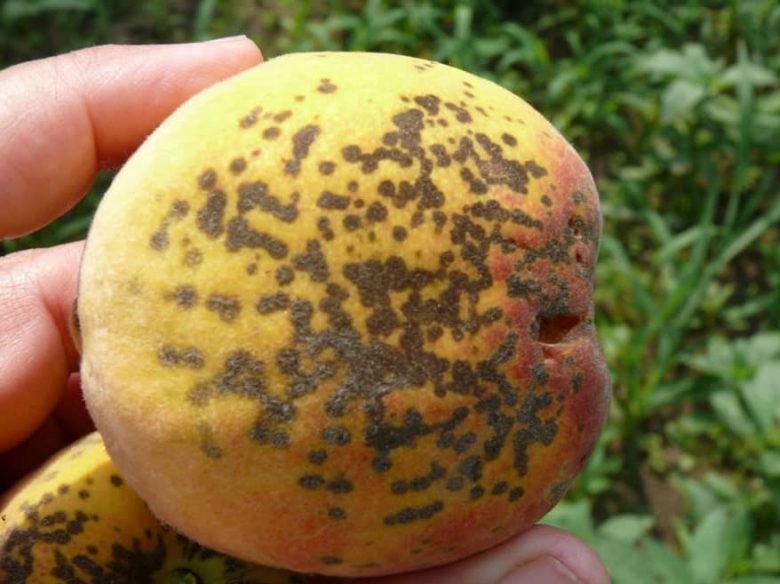
The nerume (Cladosporium carpophilum) is a disease of peach and other stone fruit also known as scab. Also in this case, responsible for the disease is a fungal pathogen that overwinters among the gems or in the cortex. The nerume affects leaves, branches and especially the growing fruit.
On the latter, there are some superficial dark spots, which then join together compromising the correct maturation. The seasons most favorable to the disease are humid and rainy springs.
Prevention and defense
To prevent the disease, it is necessary to carry out regular green pruning to aerate the foliage. In addition, it is vital to remove the fruit and other affected plant parts.
Also for the nerume a treatment with wettable sulfur is recommended, to be carried out at the moment of the fruiting.
Armillaria mellea
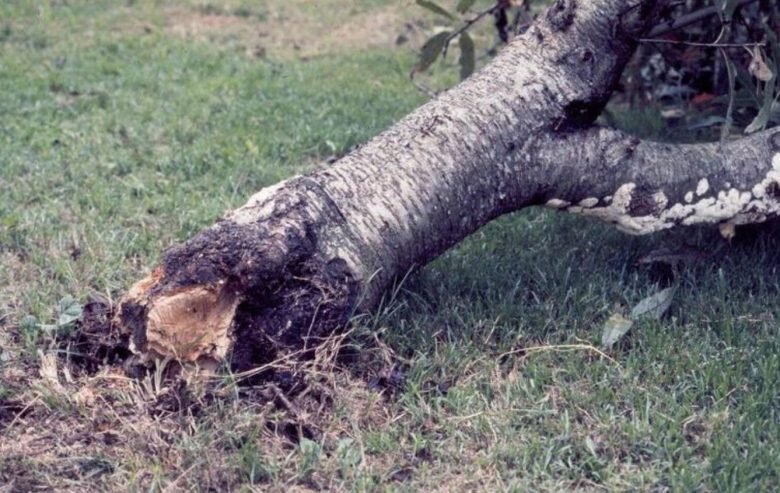
There Armillaria mellea is a fungus that affects peach trees and many other plant species, and causes a disease called fibrous root rot.
It mainly affects old and decayed trees, penetrating into wounds, and causes the death of the plant in variable times according to the vegetative state. The risk of spread is higher in tired and heavily exploited soils, for example in a peach orchard where a replanting has been carried out.
Prevention and defense
Agronomic prevention against this disease is carried out in the first place by checking the field to identify any affected plants. These must be explanted immediately. Soil management is also important:grassing is to be preferred to tillage of the land which, if not done with care, damage the root system, and therefore allow the development of the disease.
Excellent results are obtained in prevention with the use of mycorrhizaein particular Trichoderma harzianum And T. viridae.
Branch cancers and desiccation
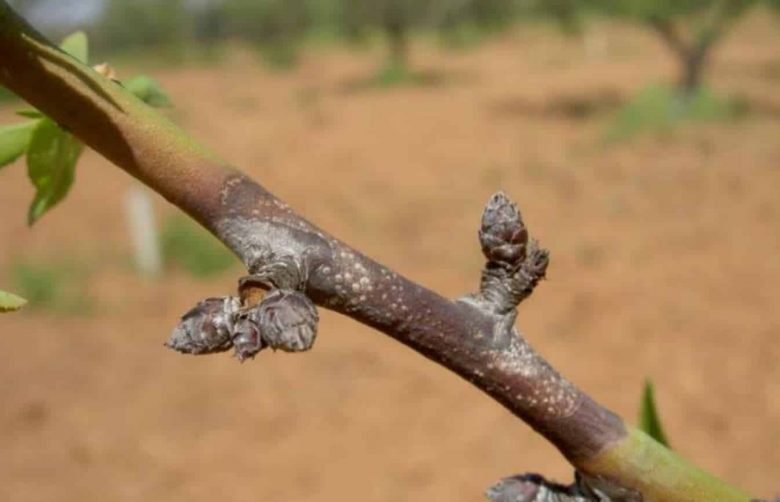
Cancers and branch desiccation on peach trees are a disease caused by fungal microorganisms Fusicoccum amygdali And Cytospora spp. It is commonly known as fusicocco and mainly affects one-year-old branches with elliptical lesions, hazel or brown in color, centered on a bud and preferably located at the base of the shoots. In severe cases, the cancer affects the entire circumference of the branch, causing the distal portion to die. The buds placed below, on the other hand, are able to vegetate normally. Attacks on the trunk or branches show necrotized portions of bark, often surrounded by rubbery exudates.
The affected peach trees are very debilitated and, in the most serious cases, they dry up over the years. The infection can also affect leaves with necrotic areas, often surrounded by a reddish-yellow halo.
The establishment of the pathogen in the plant occurs mainly through the lesions that occur with the detachment of the leaves or with the blows of hail.
Prevention and defense
To avoid the disease, it is never necessary to irrigate over the foliage, it is also necessary to cut the affected branches and burn them. Treatments with cupric products against the peach bubble are sufficient to prevent this pathology.
Diseases of the peach tree of a bacterial nature
Bacteriosis of the peach tree
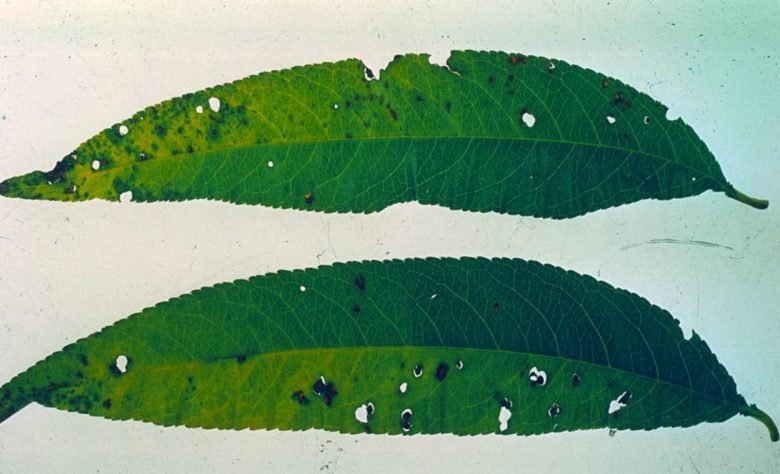
Bacteriosis of the peach tree (Xanthomonas campestris or Arboricola, pv. thorns) is also called bacterial blotch and is a disease caused by bacteria. This pathology affects peach trees with high vigor more severely (usually caused by excessive fertilization and large water availability or by grafts on vigorous rootstocks). It affects young shoots, leaves, branches and fruits.
On the affected peaches there are brownish spots of a rounded and depressed shape, accompanied by ulcerative cracks.
The affected leaves fall early, while on the branches the bacterium causes apical desiccation with necrosis of the buds in late spring and late summer.
The penetration of bacteria into the plant tissues is favored by prolonged rains and mild temperatures and occurs through stomata, lenticels and various lesions.
Prevention and defense
To avoid the disease it is of vital importance to plant healthy and certified trees, purchased from certified nurseries. In the event of an attack, the infected parts must be cut and burned. To avoid irrigation on the foliage.
On the affected plants, it is also necessary to intervene with cupric products. This treatment is to be carried out when the leaves fall, after pruning and before the vegetative restart.
In spring-summer, to avoid using copper repeatedly, you can intervene with propolis (link).

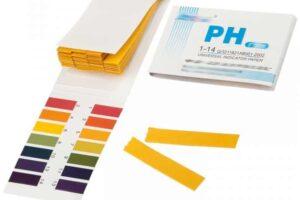
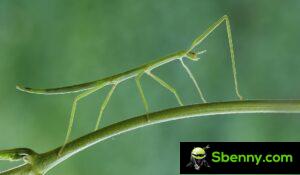
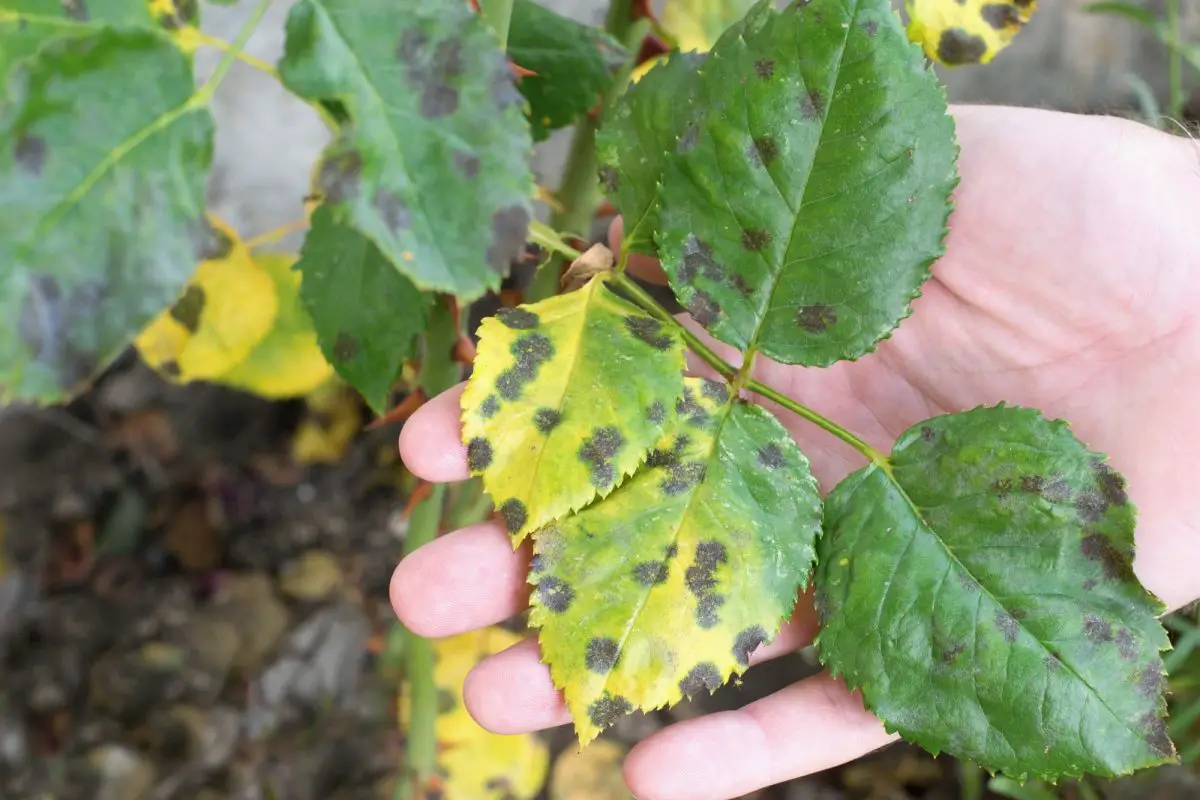
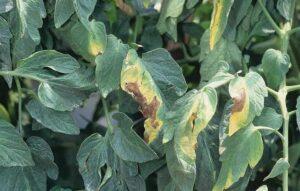
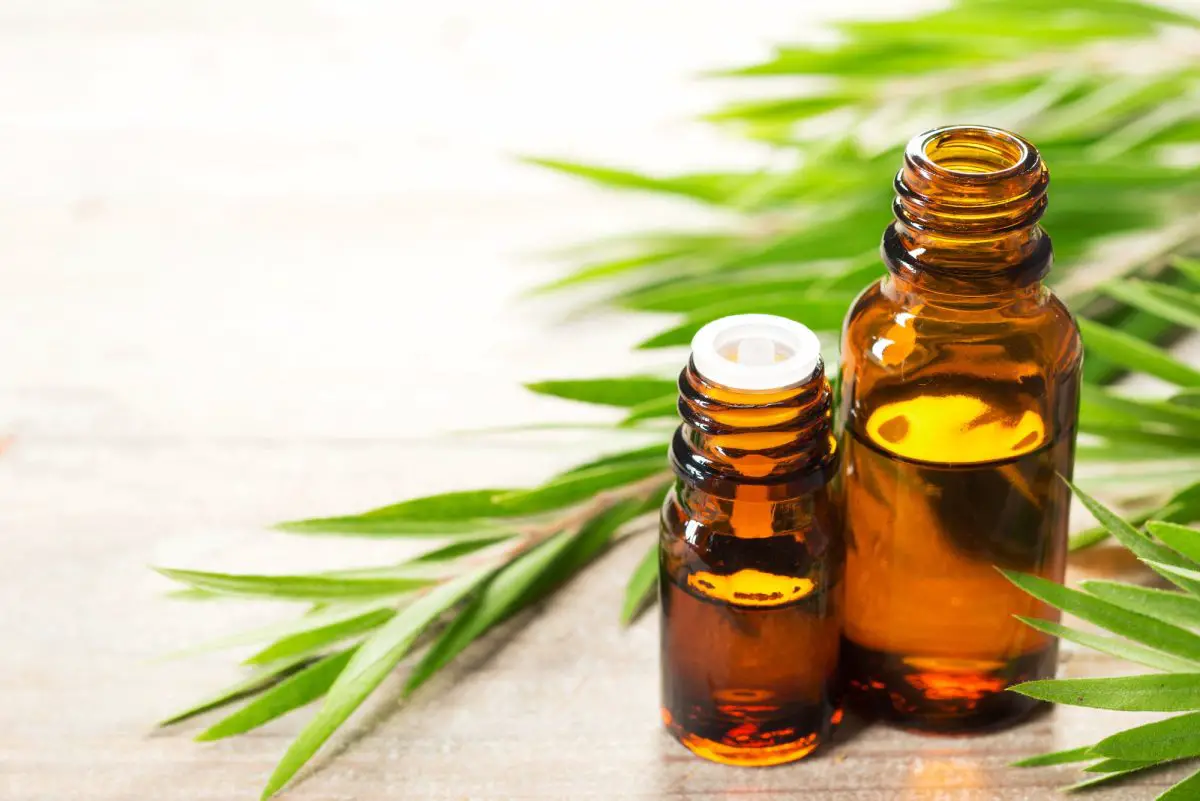
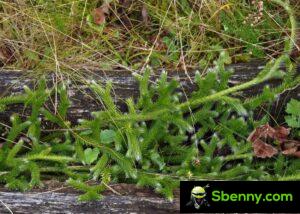
Start a new Thread